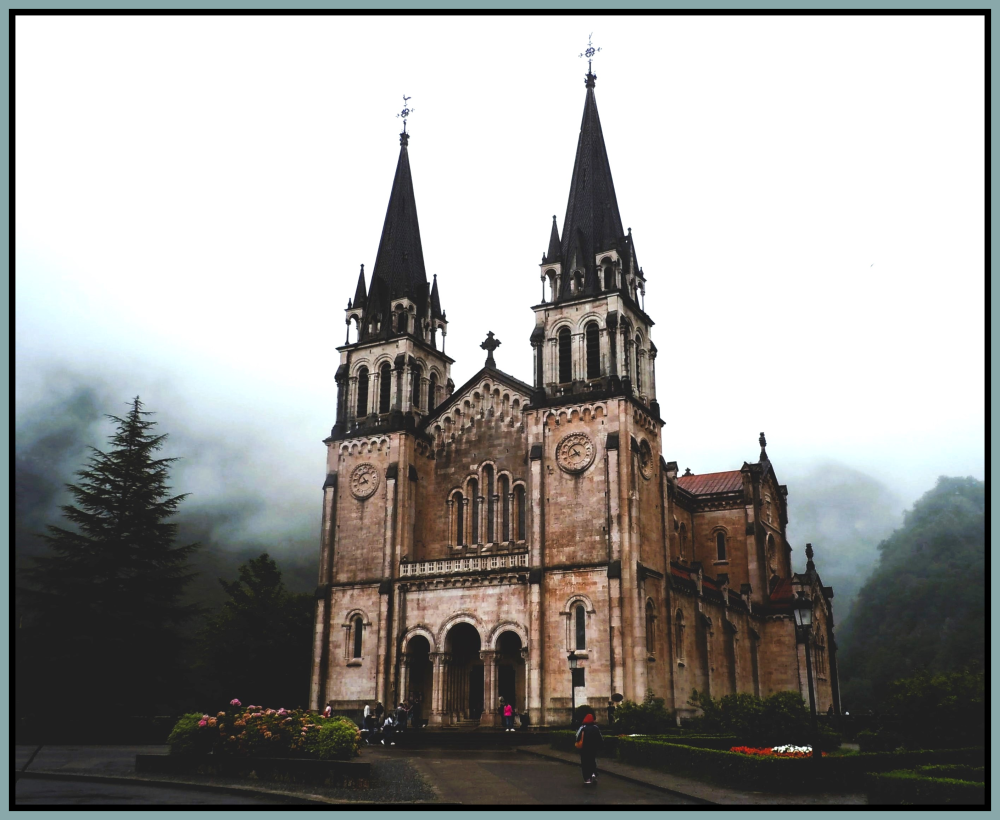“Frozen Music”: Rediscovering the Romanesque
And why did Chesterton associate Gothic architecture with murder?
The most enchanting physical structure I’ve ever seen in person is the Basílica de Santa María la Real (Basilica of Saint Mary the Royal) in Covadonga, Spain.
This masterpiece in dusty-rose-colored limestone, built during the last two decades of the nineteenth century, wondrously exemplifies the medieval style that inspired its designers.
It is massive, not as in “enormous” but as in French massif: impressively solid, heavy, and stable, as though founded in the depths of the earth, as though somehow endowed, as the psalmist says, with supernatural permanence: “God in her midst, she is not moved: / God helpeth her early, in gray morningtide.”
It is geometrically simple, with clear lines and visually powerful interplay of elemental shapes—triangles, circles, rectangles, rounded arches, as though heavenly spheres and triune divinity have been wedded to the blocks and beams that man hacks out of the mountains and the trees.
It is hierarchical, like the feudal society in which it is rooted, with sections that are distinct yet interdependent, conveying subordination but also wholeness. There is higher and lower, but all is equally contained within a liminal realm that joins heaven to earth, just as man, in the ancient Greek conception, is a liminal being, caught between light and shadow, pleasure and pain, mortality and immortality.
It is magnificently symmetrical, a literal monument to the balance and moderation upon which cosmic order, ecological abundance, and human happiness are based. To stand on the centerline of such an edifice, looking through its great portal to the half-light within, is to sense the waning of horizontality and the waxing of verticality. Look to the left or to the right—it is the same. Look up, and everything is changing, moving, converging upon something high above, unseen but felt, overpowering yet silent, awe-full, unfathomable, irresistible.
Keep reading with a 7-day free trial
Subscribe to Via Mediaevalis to keep reading this post and get 7 days of free access to the full post archives.





